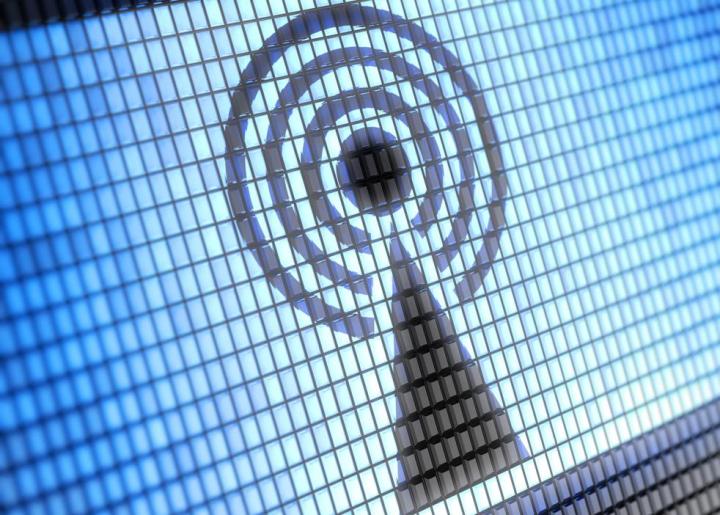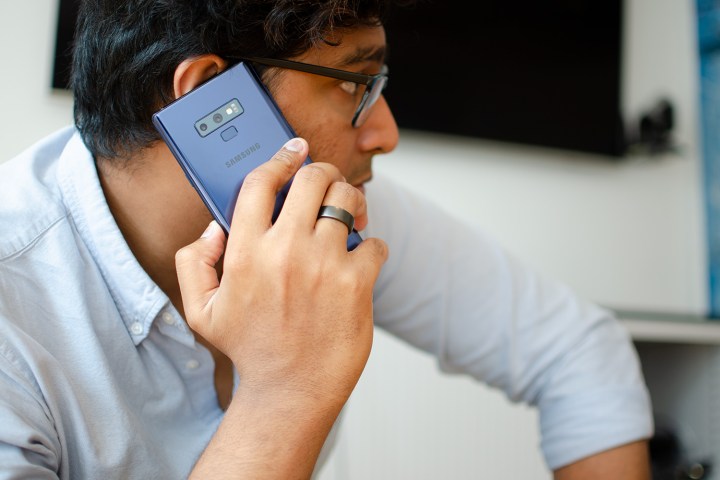As 5G rolls out across the nation, we’re all looking forward to faster download speeds and reliable high-speed connectivity. One of 5G’s biggest breakthroughs is harnessing millimeter wave (mmWave) spectrum for faster data speeds. But there are concerns this very high-frequency spectrum could pose adverse health effects for the public, including some very pervasive 5G conspiracy theories.
These kinds of concerns aren’t new — consumer anxiety concerning whether radiofrequency radiation can increase the risk of cancerous tumors existed long before cell phone towers were even a thing. To get some concrete answers on the subject, we reached out to the U.S. Food and Drug Association (FDA), a government agency that is responsible for protecting public health through the control and supervision of not only food and medicine but also electromagnetic radiation emitting devices. We further supplemented those responses with information sourced from the American Cancer Society and the International Agency for Research on Cancer. So
What is radiofrequency (RF) radiation?

To begin, let’s define radiofrequency (RF) radiation. At a basic level, radiation isn’t as intimidating a term as it might seem. Radiation is the emission of energy from any source, which means even the heat that comes off our bodies counts as radiation.
RF radiation is just another name for radio waves. As the FDA puts it, RF radiation “is one form of electromagnetic energy which consists of waves of electric and magnetic energy moving together (radiating) through space.”
A radio wave, in general, can either be ionizing, or non-ionizing. An ionizing radio wave is an ultra-high-frequency electromagnetic wave, like a gamma-ray, that could damage your DNA, and ultimately lead to rumors and even cancer. Non-ionizing radiation, however, cannot have that effect — and the radio waves used in wireless technologies, like 5G, aren’t even close to the line between ionizing and non-ionizing waves when talking about EMF exposure.
Is RF radiation safe?
The radiation that cell phones give off is at the low-energy end of the electromagnetic spectrum, making them much safer than high-energy EMF radiation like X-rays and gamma rays. While the latter give off ionizing radiation, meaning they have enough energy to ionize an atom or molecule and thus damage cell DNA resulting in cancer, RF radiation does not. RF radiation only has enough energy to move or vibrate atoms in a molecule, not enough to ionize it. That means RF radiation does not cause cancer by damaging DNA cells, however, there still are ongoing scientific studies regarding the effects of non-ionizing radiation and our radiation exposure limits.

The FDA noted in 2018 statements that it believes “the current safety limits for cell phone radiofrequency energy exposure remain acceptable for protecting the public health.”
The U.S. Environmental Protection Agency (EPA) and U.S. National Toxicology Program (NTP) also have not formally classified RF radiation as cancer-causing. Meanwhile, the World Health Organization’s International Agency for Research on Cancer (IARC) classifies RF radiation as “possibly carcinogenic to humans” due to the finding of a possible link in at least one study between cell phone use and a specific type of brain tumor. However, the IARC considers overall evidence “limited.”
It’s also important to note the IARC puts coffee and talc-based body powder in the same “possibly carcinogenic” category.
In one of the most recent studies, performed by the National Toxicology Program (NTP), high exposure to 2G and 3G RF radiation led to cancerous heart tumor development in male rats. NTP senior scientist John Butcher noted, however, that the levels and duration of exposure to RF radiation were much greater than what people experience with even the highest level of cell phone use, so the findings should not be directly extrapolated to human cell phone usage. Additionally, Butcher warned that 5G technology likely differs dramatically from that of 2G and 3G, so further studies are needed to study the impact of cell phone radiation.
What about 5G?
The FDA told Digital Trends that, at this time, it “continues to believe that the current safety limits for cellphone radiofrequency energy exposure remain acceptable for protecting the public health.”
“The limits are based on the frequency of the device, meaning that 5G has a different limit than other technologies,” an agency spokesperson wrote in an email. “As part of our commitment to protecting the public health, the FDA has reviewed, and will continue to review, many sources of scientific and medical evidence related to the possibility of adverse health effects from radiofrequency energy exposure in both humans and animals and will continue to do so as new scientific data are published.”
The vast majority of frequencies being used for 5G have been used in the past for other things.
The agency noted that it lists significant ongoing research on the potential of on its website.
It’s also important to note that the vast majority of frequencies being used for 5G have been used in the past for other things, including things like TV broadcasts and other data transmissions. Because of that, if
Still, there are those who believe we should err on the side of caution and stop the rollout of 5G until we are sure it’s completely safe.
So, is 5G mmWave safe?
According to expert agencies and the studies we have so far, there’s nothing to suggest 5G mmWave — or your 5G network and associated wireless technology — poses a significant health risk, but it’s clear there is more research to be done on the subject. If you’re the type to be cautious, it’s always possible to reduce your overall exposure to RF radiation, as you can with microwave radiation. Try sleeping with your phone away from your bed at night, for example. Not only will it give you peace of mind, but it will also promote a healthier bedtime routine — a win-win for your health. That said, the assumption that radio waves, including millimeter waves, have a negative impact on overall health, has been proven to be incorrect.
Editors' Recommendations
- Visible’s affordable 5G plans just got even cheaper
- Visible just made its unlimited 5G plan better than ever
- How fast is 5G? What you need to know about 5G speeds
- Have T-Mobile? Your 5G service is about to get much faster
- Your next phone could get a huge 5G upgrade, thanks to AI


